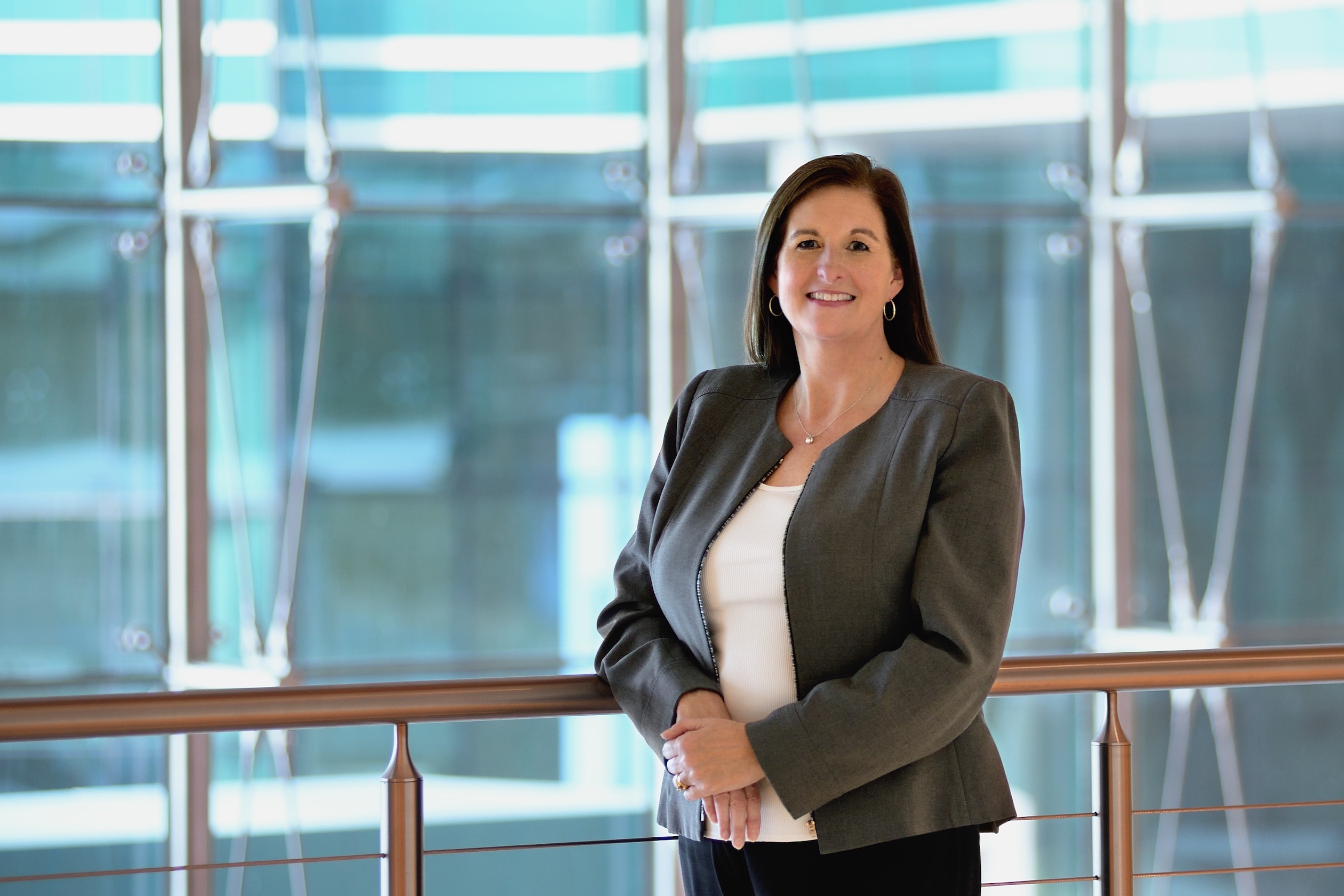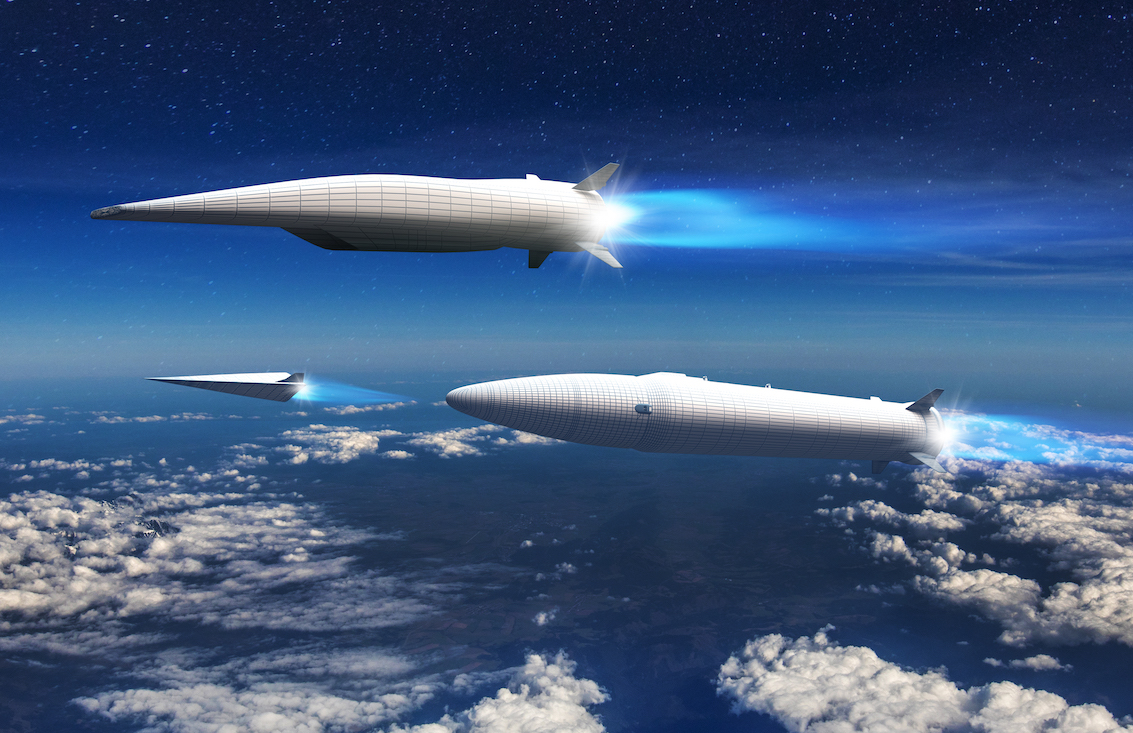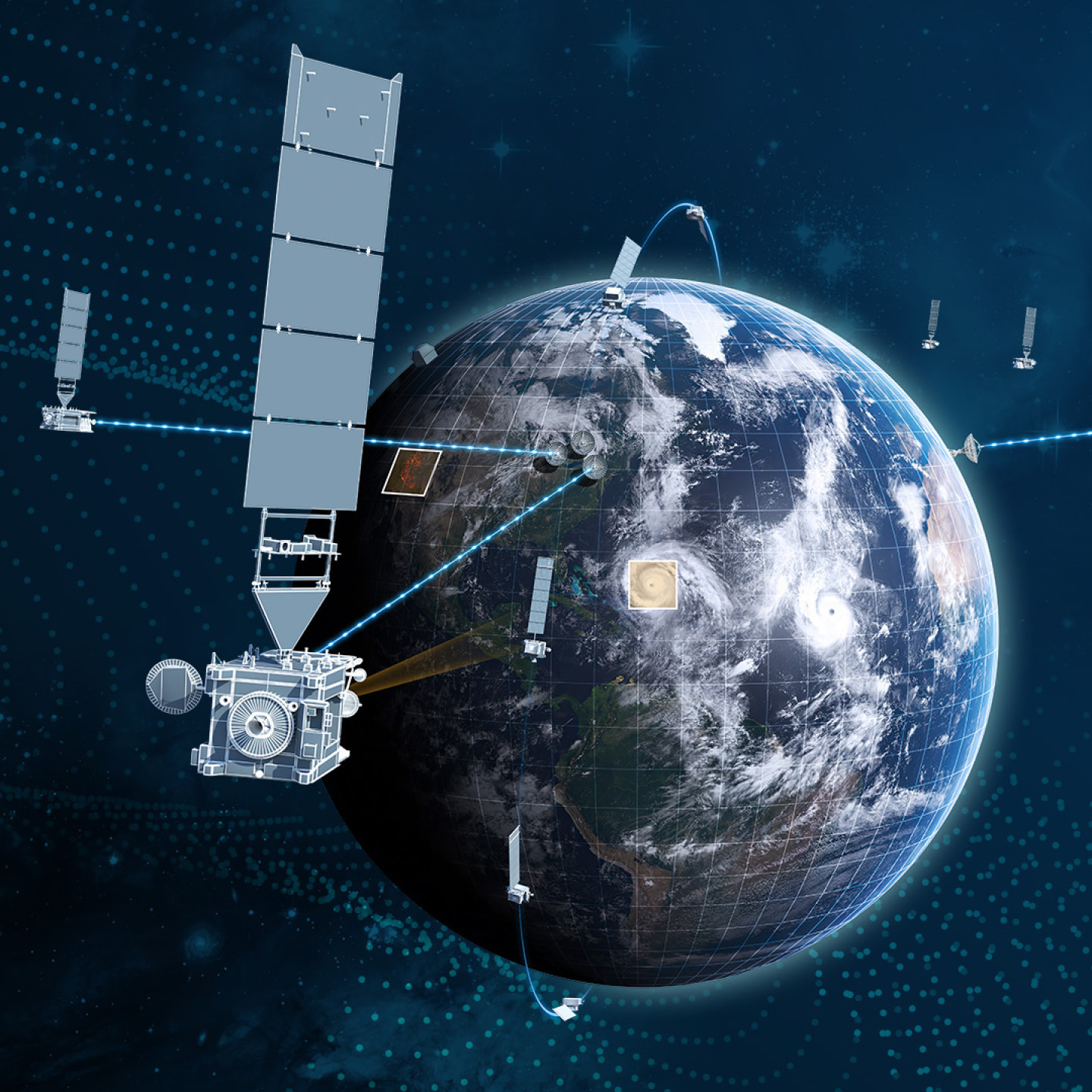Latest News
L3Harris Space President Kelle Wendling Talks Scaling Up for the New, Responsive Paradigm

Kelle Wendling is Space Systems sector president for L3Harris. Photo: L3Harris
L3Harris has a long history of space heritage, but in the past few years, the company has shifted from a payload provider to prime contractor, winning key contracts with the Space Development Agency. Space Systems sector President Kelle Wendling talks with Via Satellite about how L3Harris is investing in its space capabilities to keep pace with the evolving threat environment, and the industry-wide shift to responsive space.
Wendling has been with L3Harris for about 30 years and has worked across a range of capabilities for the company from U.S. Department of Defense (DoD) SATCOM to intelligence and cyber, and mission networks. Two years into the role, she talks about how the Space Systems sector plans to continue its growth streak and maintain its commitment to the customer.
VIA SATELLITE: L3Harris has space heritage from many different brands, including some that were part of acquisitions over the years. How do you see the company’s identity in the space industry?
Wendling: About two years ago, we brought together various organizations in the company that design and build technology and capabilities for the space domain into a single Space Systems sector. We leveraged our legacy sensors, payload, and reflector business to establish ourselves as an alternative to the more traditional defense primes. Our heritage of more than seven decades in space, is focused on these components that are most critical to mission success.
We have seen a shift in the market where customers need more responsive solutions. They need more timely capabilities on orbit, and they need them at a cost that’s significantly different from previous exquisite, single-purpose satellites. We have more than 50 satellites on order as a prime. These systems are for key customers including a new market for L3Harris — Missile Warning/Missile Defense. We leveraged our technology and best-in-class infrared payloads for weather and adapted it to the Missile Warning/Missile Defense market. This is a prime example of key innovation and reuse to reduce cost and schedule to deploy new, much needed capabilities on operationally relevant timelines. We’ve moved up the value chain to space vehicle integration, using a very mission-focused approach that resonates with our customers. There’s going to be increased demand for space in the future as our customers modernize their architectures to more proliferated, responsive systems. L3Harris provides innovative and viable alternatives for multiple critical missions for our customers.
L3Harris’ infrared and data processing technology plays a mission-critical role on several of the United States’ key missile warning and defense satellite programs, including those for the U.S. Space Force, Space Development Agency, Missile Defense Agency and Space Systems Command. Photo: L3Harris Technologies
VIA SATELLITE: What have you learned about the market in your time as president?
Wendling: The space market is on a fast trajectory to expand and grow. Affordability and availability of launch operations has decreased significantly, lowering some barriers to entry in the domain. At the same time, our adversaries are also taking advantage with advanced capabilities as well. To maintain U.S. space superiority, we need to continue to invest and innovate so we can bring capability to space on a much faster pace.
As discussed, the community is moving from that single-purpose, single satellite, exquisite solution that lasts for 20 years into a responsive paradigm. That means space vehicles don’t cost a half a billion to $1 billion dollars, but more like $30 million to $100 million, and have persistence in quantity and quality, and ensure we can get capability on orbit in three years or less. It’s a big paradigm shift for our organization and for our customers. We’re used to having cost-plus contracts, ample time for custom development, and a focus on technical performance above all. In a responsive environment, perfect is the enemy of good enough, and we all need to learn to adapt.
VIA SATELLITE: What areas in the space portfolio are you seeing the most demand for?
Wendling: Many of our government customers are driving toward a need for persistence and resilience. This concept is addressed through multiple satellites across multiple orbits. These proliferated systems need to perform together and provide data that can be shared across multiple customers. Orchestration of these mission operations is key and working across the customer community is required to make it happen.
Responsive satellites are designed for shorter life cycles (three to five years), driving more recapitalization and replenishment cycles at a significantly different pace. We’re focused on ensuring we have a strong supply chain and supplier diversity to meet this demand.
VIA SATELLITE: L3Harris is building missile warning satellites for the Space Development Agency (SDA) Tranche 1 Tracking Layer. Can you give an update on the program?
Wendling: L3Harris is excited to be on both Tranche 0 and Tranche 1. We just held a successful Critical Design Review on Tranche 1 just 13 months after contract award. That might seem like a long time to some, but for those familiar with space and defense, that’s a very short timeline.
We’re building the payloads in our Fort Wayne, Indiana facility where we’ve just added a new building for scale and expansion We’ll complete the space vehicle integration at our Florida facilities, where we’re also building a new 90,000 square foot facility that will open next fall and can support multiple classification levels simultaneously. Beyond infrastructure, we’ve also scaled process and workforce to ensure we can build these systems repeatably and reliably. The program is on schedule and will provide very innovative capability for the SDA.
The Tranche 2 Tracking Layer proposals have been submitted. This timing is indicative of the pace of deployment, replenishment, and recapitalization that we’ll see in the future that’s driving market demand.

L3Harris is redefining how to develop and deploy missile warning and defense satellites with responsive, resilient and affordable end-to-end solutions to quickly proliferate constellations and address threats. Photo: L3Harris Technologies
VIA SATELLITE: What are your thoughts on how the U.S. government acquires space capabilities? How can the relationship be improved further?
Wendling: The Space Development Agency deserves credit for changing the pace of acquisitions inside the DoD. We have seen them move at a much faster and agile pace than in the past. In general, the acquisition is improving, but there’s more work to do. We need to have more candid conversations on appropriate contract types depending on mission class; how well defined the requirements are; whether the system is a demo or operational; and be more comfortable making risk-based decisions. We talk about Class A, Class B, and Class C missions. We (industry and the government) tend to execute them all as Class A, which is aligned to those exquisite systems of the past. We need to recognize a state-change is needed if we want to get capability on orbit faster.
We should also leverage commercial technology. There’s no reason drive bespoke technology if commercial is equally reliable and has equal performance. I believe we need to take a page from the commercial book on how we develop, design, build, and test. Somewhere in the middle of how they execute and how we have done it for traditional government programs is probably the right approach for this new risk spectrum.
VIA SATELLITE: Where does L3Harris fit in in terms of traditional aerospace and commercial?
Wendling: L3Harris is more of a traditional aerospace and defense prime, but we’ve embraced an agnostic, mission focused strategy, that is focused on providing our customers with the best solution for their mission. We are not vertically integrated, so we don’t push internal products/solutions or proprietary software. That contributes a lot to vendor lock. We’re vendor agnostic. We have strong strategic relationships with several key providers in the space domain to ensure supplier diversity and to limit single points of failure in our solutions.
VIA SATELLITE: Weather technology is another key area of L3Harris space capabilities. What is the market demand in weather, and how is L3Harris evolving in this area?
Wendling: NASA and NOAA have been long-term customers for L3Harris. We’ve been building weather payloads for more than seven decades. We are building the Advanced Baseline Imager for NOAA’s next generation Geostationary Extended Observations Satellite and are also under contract to build an advanced imager and sounder for Japan to provide advanced weather capabilities and forecasting. The weather market will remain more traditionally exquisite and recapitalize on their tradition 10 to 12-year cycles, but L3Harris has captured a large share of domestic and international opportunities with the latest NOAA and Japan wins.
We also continue to grow and support the ground segment, having also won the GOES-R ground sustainment contract. We’re very excited to continue our long-term partnerships with NASA and NOAA and grow our international footprint in weather.
The core of our Missile Warning/Missile Defense capabilities was born out of the weather infrared sensors. The innovation of that team can’t be understated. With the high sensitivity of our imager, we could see heat signatures from launches. From this, we recognized this technology was applicable to DoD missile defense missions. As a result, we’re expanding our Fort Wayne facility footprint to support weather recapitalizations for both domestic and international customers, as well as payloads for Missile Warning and Missile Defense solutions.

As extreme weather threatens lives and livelihoods around the world, L3Harris is delivering next-generation weather instruments and ground systems to forge a new era of preparedness. Photo: L3Harris Technologies
VIA SATELLITE: It sounds like you are scaling up in a big way.
Wendling: We have grown double-digit revenue in the last two years and are on pace to do that this year as well. For the increased proliferating constellations and shorter cycle acquisitions, we have made some intentional investments. Facilities, capital, automation, and the workforce are all parts of that. There are approximately 6,000 people in my organization now. We’ve invested more than $150 million in process, infrastructure, and our workforce.
Besides the two new buildings we discussed, we’re preparing with updated manufacturing processes to ensure we can continue to deliver the mission performance that we always have, whether we’re building the payload or serving as the prime vehicle integrator.
We also need to make sure our experienced leaders are training that next generation. Our organization established a Space Vehicle Academy, so that our staff can be trained on the specifics of building space hardware and understand the challenges and unique processes that come with building hardware and software for space.
VIA SATELLITE: Are you open to hiring outside of traditional space and defense backgrounds?
Wendling: I don’t believe the learning curve is anything that can’t be overcome. I like the idea of fresh eyes. Our 30-year heritage in some of these businesses is a blessing and a curse. Sometimes we know too much, and our employees are less risk tolerant because of how we’ve done things and what’s worked in the past. Newer talent sometimes isn’t aware of what can’t be done yet. I like the questions they ask and the fresh perspectives they can bring to help us make the shift needed to execute more efficiently.
VIA SATELLITE: What are your goals and growth targets for the next few years?
Wendling: One of the largest growth areas we’re looking at is what we call “space dominance,” which is aligned with maintaining space superiority. We’re seeing the largest budgeting and biggest demand in Missile Defense and other protect and defend missions. There’s opportunity for us to leverage capability inside the entire L3Harris portfolio, not in the Space Systems sector, to provide discriminating capabilities to our customers. Some of these are key technologies for L3Harris where we’re augmenting air/land/sea capabilities to the space domain.
VIA SATELLITE: How would you describe the culture in the Space segment?
Wendling: I’ve been a long-term L3Harris employee. One of the things I appreciate most in our culture, and that I try to foster is focus on mission success. As our employees are read into our missions, they demonstrate a real sense of ownership and dedication. We build a very transparent relationship with our customers and each other, to support an executable program and delivery on critical missions. I am so impressed with how our Space Systems team responds to the challenge of solving some of our customers’ hardest problems with innovation and creativity. At our core, we are a mission-focused organization and take immense pride is supporting these critical needs for our national defense.
VIA SATELLITE: What has it been like for you to step into the role of sector president?
Wendling: While I’ve run other sectors previously, Space Systems is an order of magnitude larger and more complex. While daunting at first, I’ve enjoyed the challenge. The team has key market differentiators and are undaunted by challenges or hard problems. The team takes ownership for our results and demonstrates creativity and innovation both technically and from a business perspective to drive business results. It’s been a pleasure to lead such a dedicated team that’s willing to break down barriers and embrace change.
Get the latest Via Satellite news!
Subscribe Now